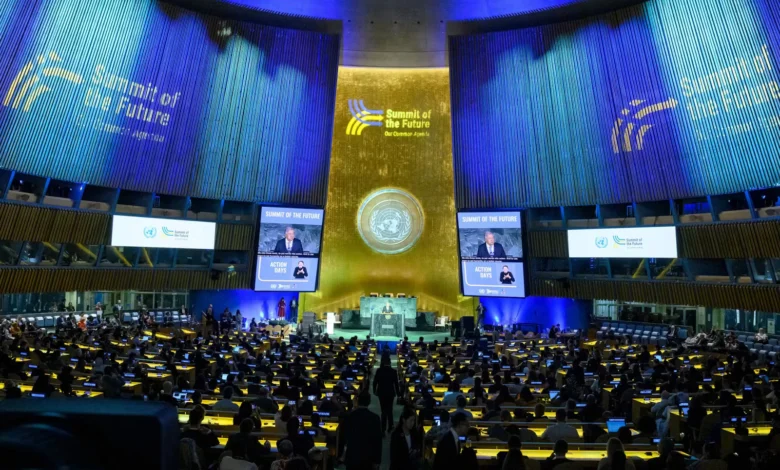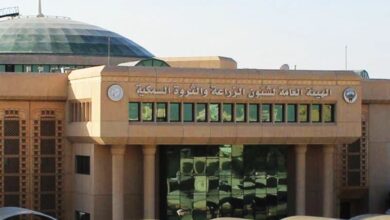
By Thomas Hale and Anne-Marie Slaughter
Special to The Times Kuwait
Thomas Hale, Professor of Global Public Policy at the Blavatnik School of Government at the University of Oxford, is the author of Long Problems: Climate Change and the Challenge of Governing across Time.
Anne-Marie Slaughter, a former director of policy planning in the US State Department, is CEO of the think tank New America, Professor Emerita of Politics and International Affairs at Princeton University, and the author of Renewal: From Crisis to Transformation in Our Lives, Work, and Politics.
International cooperation tends to be hardest when it is needed most. This week, world leaders convened in New York for the United Nations Summit of the Future, which member states called for in 2020, on the UN’s 75th anniversary. The meeting’s agenda was as ambitious as its name suggests, aiming to forge consensus on peace and security, development, new technologies, and the protection of future generations.
Member states agree on one point: the multilateral system that was established in 1945 needs significant upgrades to confront today’s global crises. They are keenly aware of the UN’s inability to stop or even slow the wars in Sudan, Central Africa, Gaza, Ukraine, and a dozen other conflict zones. They acknowledge their failure to prepare the world for the next pandemic, even after witnessing the devastation of COVID-19. They recognize the need for rapid, serious action to address a sovereign-debt crisis, an intensifying climate crisis, and the emergence of new technologies like artificial intelligence and gene editing.
Unfortunately, agreement on the need to fix the system does not extend to how. More than a year of grinding negotiations over the Pact for the Future, the summit’s outcome document, concluded dramatically on Sunday morning as Russia protested adoption of the final document, only to be overruled. Later that day, Argentina denounced the Pact as a “totalitarian agenda.” In reality, the document largely repeats previously agreed, abstract language. But amid the lofty words, there are signs of trends that could reshape global politics and help build the foundations for an international system that is capable of meeting current and future challenges.
After experiencing two world wars and facing the risk of nuclear escalation, the UN’s architects designed a multilateral system that would enable a handful of great powers to steer the world toward peace and advance their own interests. But this kind of global governance is not fit for today’s world, and especially not for the roughly four billion people under the age of 30. Even in the face of continuing conflict on multiple continents, war is no longer the only item on the global agenda. Pandemics, climate change, poverty, mass migration, and technological catastrophes all require effective and inclusive international action.
Moreover, a much wider range of countries have enough power to influence world affairs. The rise of China has captured the most attention, but it is far from the only country shaping the global agenda: Barbados has pushed for reform of the international financial system, and the United Arab Emirates has sought to reconfigure regional relations. Brazil will host the G20 this year and a make-or-break UN Climate Change Conference (COP30) next year.
Surprisingly, the Pact for the Future recognizes this increasing multipolarity with concrete, albeit incremental, progress on one of the UN’s thorniest problems: reforming the Security Council. After decades of false starts, member states are moving the process forward by agreeing to greater representation on the Council for ‘developing countries and small- and medium-sized states’. The pact also commits member states to discuss limits on the ‘scope and use’ of the veto wielded by the Security Council’s five permanent members, revolves to treat the representation of African countries as a ‘special case’, and endorses an active role for the General Assembly when the Security Council fails to act.
Another trend reflected in the negotiations is the important role that companies, NGOs, cities, and other actors are playing in addressing global challenges, forming networks that complement national governments. From climate change to AI and misinformation, non-state entities are increasingly shaping the outcomes that matter most to people. The Pact for the Future pledges to ‘strengthen partnerships’ across the ‘whole of society’, including local and regional governments, the private sector, academic and scientific communities, religious groups, and indigenous peoples. The Global Digital Compact, agreed as an annex to the pact, identifies the private sector, researchers, and civil society as ‘essential’ for achieving its goals and commits to multi-stakeholder cooperation.
Lastly, the summit embraced a shift toward longer-term governance. Climate change, pension schemes, infrastructure investment, and other ‘long problems’ have causes and consequences that unfold over many generations. In the Declaration on Future Generations, a second annex to the pact, countries affirm their commitment to ‘safeguard the needs and interests of future generations’, echoing the first line of the 1945 UN Charter, in which their predecessors pledged to ‘save succeeding generations from the scourge of war’.
These grand statements are grounded in specific actions taken by national governments intent on extending the horizon of decision-making. In 2015, Wales was the first government to establish a Commissioner for Future Generations. This month, the European Commission appointed a Commissioner for Intergenerational Fairness. South Korea has also recently moved in this direction, with the Constitutional Court ordering the government to set more ambitious climate targets to protect future generations. To the extent that the declaration catalyzes more change, it could eventually be seen as a transformative force, much like the 1948 Universal Declaration on Human Rights.
In his 2021 Our Common Agenda report, UN Secretary-General António Guterres foresaw a “future of perpetual crises, or a breakthrough to a better, more sustainable, peaceful future for our people and planet.” The Pact for the Future is not the breakthrough that many had hoped for, but it begins to outline the contours of a new system that could rectify the shortcomings of the old one.

Thomas Hale
Professor of Global Public Policy at the Blavatnik School of Government at the University of Oxford is the author of Long Problems: Climate Change and the Challenge of Governing across Time.

Anne-Marie Slaughter
A former director of policy planning in the US State Department, is CEO of the think tank New America, Professor Emerita of Politics and International Affairs at Princeton University, and the author of Renewal: From Crisis to Transformation in Our Lives, Work, and Politics.
Copyright: Project Syndicate, 2024.
www.project-syndicate.org












